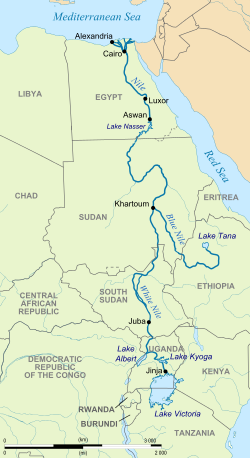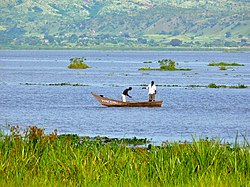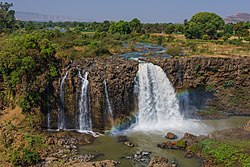Nile
The Nile is this huge river, I think its the longest one anywhere, going more than 6600 kilometers across northeastern Africa. It starts up in the highlands of places like Burundi and Rwanda, and flows north through Uganda, Sudan, Egypt, all that, until it hits the Mediterranean Sea. For thousands of years, its been super important to people living around it. Like, it gives fresh water for drinking and for watering crops, plus its good for moving stuff around and trading. That fertile soil from the floods back in ancient times helped grow food, which let big societies pop up, especially Ancient Egypt. The floods would bring in all this nutrient rich silt to the banks, making everything grow better. Today though, the river keeps things going for millions in what would just be dry desert without it. Its kind of hard to imagine how arid those areas are otherwise. Some parts of the path still surprise me, like how it goes through so many countries before ending..
Its longest section starts in Lake Victoria, and flows into the Mediterranean Sea near Alexandria. It gets its name from the Greek word "Νεῖλος" (Neil's).
This longest part is called the White Nile. It flows from Lake Victoria in Uganda, and through Sudan to Khartoum. There it is joined by the Blue Nile to form the Nile proper, which then flows through Egypt. The Blue Nile comes from Ethiopia near the Red Sea. The two branches meet near Khartoum, in Sudan. About 300 million cubic metres of water flow down the Nile each day.
The Nile is essential to the drier countries in the north of Africa. On the Nile there are many boats: it is one of the easiest ways to get around. Historically, most cities in Egypt are built next to the river, and the pyramids are close to the Nile. The Nile has always provided most of the water used to grow crops in Egypt: much of the rest of the country is a desert. In ancient times the Nile flooded every year and the people would starve if there was not enough water for the crops. The Ancient Egyptians got papyrus from the Nile to write on. Papyrus is made from a plant which grows near the Nile.
Many different types of animals live in or near the waters of the Nile, including crocodiles, birds, fish and many others. Not only do animals depend on the Nile for survival, but also people who live there need it for everyday use like washing, as a water supply, keeping crops watered and other jobs.
Pyramids were built close to the Nile because they needed the granite stones from Aswan to be transported by barges down the Nile.
History of the word Nile
The word "Nile" comes from Greek Neilos (ὁ Νεῖλος).[1] Neilos came from the word "river valley". In the ancient Egyptian language, the Nile is called Ḥ'pī or iteru, meaning "great river", represented by the hieroglyphs shown above (literally itrw, and 'waters' determinative).[2] In Coptic, the words piaro (Sahidic) or phiaro (Bohairic) meaning "the river" (lit. p(h).iar-o "the.canal-great") come from the same ancient name. +{{{1}}}−{{{2}}}
The Waterfalls of the Blue Nile
The Nile, at Aswan
The Nile, at the height of Luxor
Nile Media
The Nile's drainage basin
Spring at Lake Victoria
The Blue Nile Falls fed by Lake Tana near the city of Bahir Dar, Ethiopia
The Nile represented in an ancient Roman mosaic found from the ruins of Pompeii
References
| Wikimedia Commons has media related to Lua error in Module:Commons_link at line 62: attempt to index field 'wikibase' (a nil value).. |
- ↑ Spelling of Greek taken from the Pocket Oxford Classical Greek Dictionary, 2002, ISBN 978-0-19-860512-6, p. 362
- ↑ What did the ancient Egyptians call the Nile river? Archived 2008-05-24 at the Wayback Machine Open Egyptology. (Accessed 17 October 2006)
Other websites
- Nile River -Citizendium














